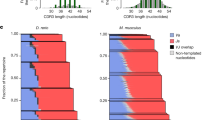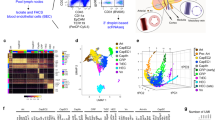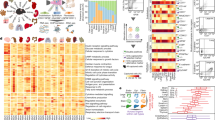Abstract
MANY cell–cell interactions are similar in a wide variety of species; for instance, penetration of ova by spermatozoa, morphogenetic cell movements during embryogenesis, and specific cellular cooperation during the immune response in vertebrates. The operation of apparently identical functional interactions in diverse species, however, does not exclude the possibility that the cell surface receptors and ligands involved may have changed considerably during evolution. In fact, studies of the molecular evolution of certain enzymes and proteins present in numerous species have demonstrated that structural evolutionary change (that is, amino acid substitutions) may proceed even in the absence of observed functional modification1. For this reason, we suggest that the investigation of the degree of evolutionary change in structures mediating conserved cell–cell interactions requires determination of the degree to which the interaction is possible between cells from different species. The present study was designed to examine quantitatively the effect of progressive evolutionary divergence on interspecies cellular cooperation in a simple, highly conserved cell–cell interaction: the specific adherence of lymphocytes to specialised lymphocyte-binding high endothelial venules (HEV) in lymph nodes. Based on results of quantitative in vivo and in vitro assays, we report that the ability of lymphocytes from different vertebrate species to recognise specifically and bind to HEV in the mouse declines exponentially with increasing evolutionary separation of the lymphocyte donor from the mouse host. This suggests that, in spite of conservation of the functional interaction in all mammalian species examined2, the cell-surface structures mediating lymphocyte adherence to HEV have been continuously and randomly altered during evolution.
This is a preview of subscription content, access via your institution
Access options
Subscribe to this journal
Receive 51 print issues and online access
$199.00 per year
only $3.90 per issue
Buy this article
- Purchase on Springer Link
- Instant access to full article PDF
Prices may be subject to local taxes which are calculated during checkout
Similar content being viewed by others
References
Dickerson, R. E. J. molec. Evol. 1, 26–45 (1971).
Miller, J. J. III Lab. Invest. 21, 484–492 (1969).
Gowans, J. L. & Knight, E. J. Proc. R. Soc. B195, 275–282 (1964).
Sedgley, M. & Ford, W. L. Cell Tissue Kinet. 9, 231–240 (1976).
Stamper, H. B., Jr & Woodruff, J. J. J. Immun. 119, 772–780 (1977).
Butcher, E., Scollay, R. & Weissman, I. Adv. exp. Med. Biol. 114, 65–72 (1979).
Butcher, E., Scollay, R. & Weissman, I. J. Immun. (in the press).
Young, J. Z. The Life of Vertebrates (Oxford University Press, New York, 1962).
Simpson, G. Cold Spring Harb. Symp. quant. Biol. 24, 255–271 (1959).
Wood, A. E. in New Encyclopedia Britannica, Vol. 15, 976–980 (Benton, Chicago, 1973).
Woodruff, J. J., Katz, I. M., Lucas, L. E. & Stamper, H. B. J. Immun. 119, 1603–1610 (1977).
Ford, W. L., Sedgley, M., Sparshott, S. M. & Smith, M. E. Cell Tissue Kinet. 9, 351–61 (1976).
Author information
Authors and Affiliations
Rights and permissions
About this article
Cite this article
BUTCHER, E., SCOLLAY, R. & WEISSMAN, I. Evidence of continuous evolutionary change in structures mediating adherence of lymphocytes to specialised venules. Nature 280, 496–498 (1979). https://doi.org/10.1038/280496a0
Received:
Accepted:
Published:
Issue Date:
DOI: https://doi.org/10.1038/280496a0
Comments
By submitting a comment you agree to abide by our Terms and Community Guidelines. If you find something abusive or that does not comply with our terms or guidelines please flag it as inappropriate.



